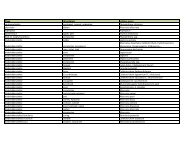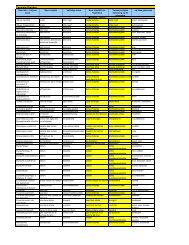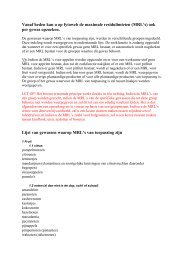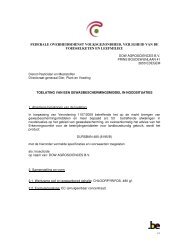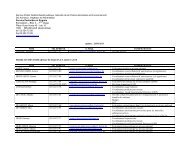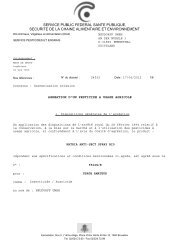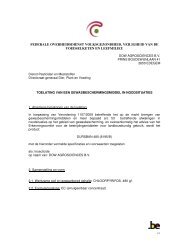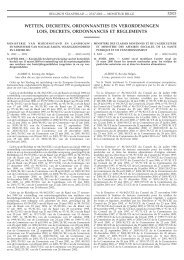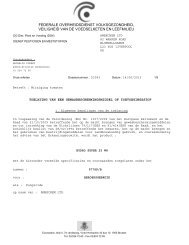Published or not - fyto
Published or not - fyto
Published or not - fyto
You also want an ePaper? Increase the reach of your titles
YUMPU automatically turns print PDFs into web optimized ePapers that Google loves.
CHLOROTHALONIL<br />
- 19 -<br />
APPENDIX II<br />
END POINTS AND RELATED INFORMATION<br />
2. Fate and behaviour in the environment<br />
20 December 2004<br />
2.2 Fate and behaviour in water<br />
Abiotic degradation<br />
Hydrolytic degradation:<br />
Maj<strong>or</strong> metabolites:<br />
Photolytic degradation:<br />
Maj<strong>or</strong> metabolites:<br />
pH 5: no hydrolysis (n=3)<br />
pH 7: no hydrolysis (n=3)<br />
pH 9: DT50 (20°C) 16-38 days. (n=<br />
none<br />
Photolysis of chl<strong>or</strong>othalonil is <strong>not</strong><br />
an imp<strong>or</strong>tant route in the<br />
environment.<br />
DT50 65 days, non-validated<br />
method<br />
DT50 10.5 h, with acetonitrile<br />
acting as photosensitiser<br />
SDS-3701: DT50 47.5 min at<br />
40°C and 53.7 min at 18°C<br />
Biological degradation<br />
Readily biodegradable:<br />
Water/sediment study:<br />
DT 50 water:<br />
DT 90 water:<br />
DT 50 whole system:<br />
DT 90 whole system:<br />
Distribution in water / sediment<br />
systems<br />
(active substance)<br />
Distribution in water / sediment<br />
systems<br />
(metabolites)<br />
no<br />
2.5 hours; This value also applies<br />
f<strong>or</strong> the whole system (study 7)<br />
maj<strong>or</strong> part of r.a. in water phase.<br />
Max. in water: 72% at 0 day. Max<br />
in sediment: 4.7% at 0,25 day and<br />
after day 14 remains 10% of<br />
applied radioactivity. In the<br />
sediment bound residues



